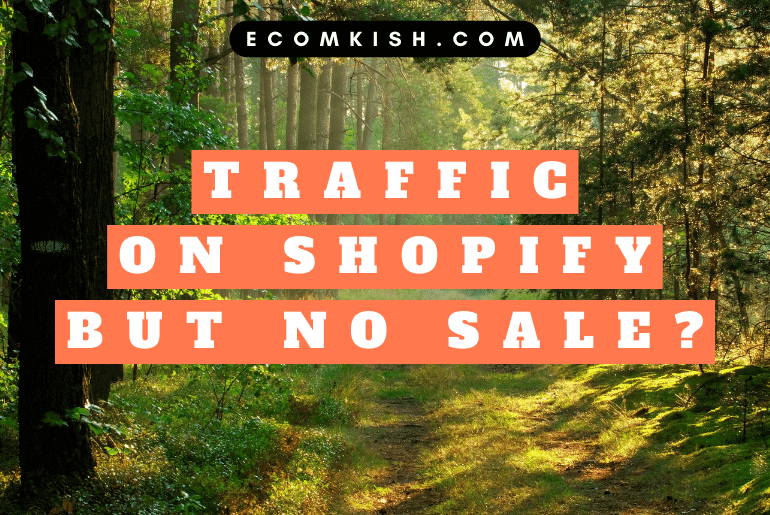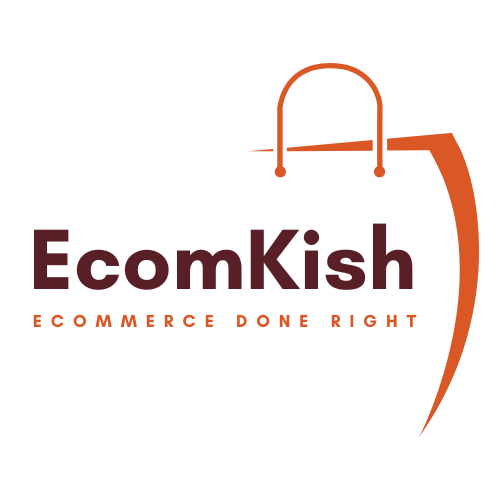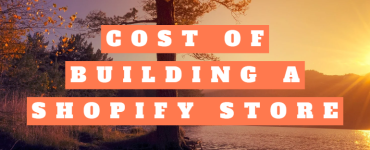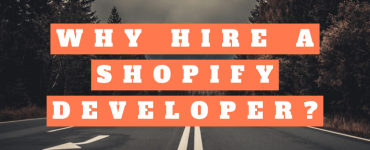
You’ve set up your Shopify store and ads, and traffic is flowing to your website, but that’s as far as it goes. Visitors are just not buying! What could be wrong? Let’s break it down and look into it. It could be a simple store issue that requires an easy fix or an external issue that will send you back to the drawing board. Below is a list of potential problems that could work against you in your quest to make 6 figures a month.
Table of Contents
Low-Quality Traffic
High-quality traffic is made up of individuals known to convert when they find something they like. The internet is full of individuals who click on every other ad they see. You must ensure that your targeting options are precise enough to be seen by people who are likely to buy from you. When setting up your campaign objective on Facebook Ads, choose an objective related to conversions rather than traffic.
High Page-Load Time
Over 40% of the traffic flowing to your website will bounce if your pages take longer than one second to load. Page load times are affected by various things. The number of apps installed in your Shopify store, your Shopify store theme’s design, file sizes of images on your store, errors in the Shopify theme you are using, increased traffic on your store, etc.
Whatever the case, you should inspect every suspect likely to increase page load times and fix the issues. If you can’t do this yourself, I recommend you find a professional like myself who will help you improve the loading times on your pages.
Complex Theme Navigation
Customers should not struggle to find their way to your website’s cart, wishlist, or specific collection. From the onset, you should work with your developer to ensure that navigation throughout the website is simplified. Every page on your website should only be a click away from the page the customer is, literally, one click. Don’t make them click two or more links to get to the destination.
High Shipping Fees
In my career, I have come across websites with $15 products whose shipping fee was above $20. This would make customers question whether they should pay for the product or shipping.
Take time to calculate the prices of your products to ensure that shipping fees are accounted for as part of the prices. Where possible, make shipping free beyond a certain order total. For instance, make delivery for all orders whose total exceeds $100 free but factor the cost of the shipping into the prices of the products.
High Product Prices
A key to making more sales is understanding the purchasing power of your ideal customer. If you come up with exorbitant prices that are beyond the reach of your customers, your bounce rate will shoot up. I like to say, don’t get greedy. Always work within the limits of your audience.
Take time to understand who makes up your audience, how much they earn and work with that. Not only does it give you insight into how much you should charge, but it also increases your conversion rate over time.
Low-Quality Product Images
Maybe you have an excellent website, and your ads are spot-on, but your product images are sketchy. They are not clear, the resolution is not consistent, or maybe they are just grainy. All these are dealbreakers to a customer. They don’t inspire trust. The customer will get cold feet and walk away.
Poor Web Design
Your website looks unprofessional. It doesn’t look like you put much thought into it, or maybe you paid $30 to develop it. Whichever your case is, you need to put more thought and effort into your design and development phase.
Customers want to buy from a professional because this assures them they will get their money’s worth. Find an experienced Shopify developer if you cannot do it yourself. This will save you a lot of headaches in the future.
Sketchy Product Descriptions
Take time to research, write, and proofread your descriptions before you publish them in your store. Spelling mistakes and poor grammar will elicit fear in your clients. Fear is not good for your business. It might increase the bounce rate.
If you are not good with grammar, hire someone on Fiverr or Upwork to write and proofread your work. Don’t force yourself to do something you are not good at, especially if you know it will harm your business’s reputation.
Exhausted Product
At some point, you have to be honest with yourself. Maybe you chose an exhausted product for your business. An exhausted product has been oversold and can be found on many platforms that sell products like yours or sell to the same niche.
Customers come to your store expecting to see something different about the product but find that nothing about it has changed, so they walk away; you really can’t blame them. Additionally, they’ll probably get it from a local store or another website with slightly lower prices than yours.
Audience And Niche Disparity
You have no business advertising a figure skating keyholder to a baseball fan. Your products should strictly appeal to your niche. When your store is focused on a niche, your customers are more likely to trust you.
Additionally, you will have a higher average order value when your store appeals to a certain group of people because they will be interested in more than one item in your store. This will not happen often if you have a general store that doesn’t appeal to a particular crowd.
Audience Purchasing Power
Your product prices and your target audience must always go hand-in-hand. If your average product price is $150, your audience should be able to afford a $150 item. It is no use to target a broader audience that will come to the website but will not afford any of your products.
Convoluted Checkout Process
Your checkout process should have a maximum of three steps. The customer should see what’s in their cart, provide their address, and pay. If it has more than 3 steps, you might be losing customers in this process. Consider simplifying your checkout process by removing unnecessary steps that could prevent customers from checking out in less than 3 minutes.
Trust Issues
When customers visit a website they have never seen or heard of, they’ll look for clues that the store is legitimate. They don’t want to be scammed. There are too many scams going on online. You need to have features reassuring them that the website is legit and provide guarantees whenever possible.
Guarantees can be in the form of reviews (real reviews), evidence of recent purchases, secure payment banners, good designs, and many other things that inspire trust. To get through this, think about things that YOU would look for on a website if you were the one shopping. That is the same way your customers think.
Find ways to answer their questions before they ask them. This way, conversions will naturally increase because customers feel satisfied and confident that you will deliver what you’re selling.
Low Product Demand
Sometimes, you have gotten everything right, and even the product is good. However, the demand is just not there. An audience that is happy about your product and willing to buy it exists, but it’s not big enough to create a business from.
In this case, I recommend you grow your audience size or change your niche to ensure you have room to try out different things with the same crowd.
Unresponsive Website
It is no secret that up to 90% of your website visitors are mobile users. Suffice it to say, your website needs to look good on their phones to increase your chances of converting them. If it isn’t responsive or is difficult to navigate, they’ll abandon your website and order from a different website.
Conclusion
We all have our strengths and weaknesses. It is nothing to be ashamed of. You might be good at running high-performance ads but designing a good Shopify store is not your strong suit. I recommend you find a professional (if you can afford one) to ensure your website meets most of the requirements we have discussed.
To find a Shopify developer, you can go to Fiverr or Upwork. Alternatively, you can Hire Me to build your store(s). The benefits of doing this far outweigh the cost you will incur, losing valuable traffic to avoidable mistakes.
If hiring a developer is not within your budget, take your time to learn about these things before you start spending money on advertisements.
Remember, your website is a tool for building trust with your customer and convincing them to buy your products in your absence. Don’t let it embarrass you and cause you to lose money.
All the best!!














Add comment